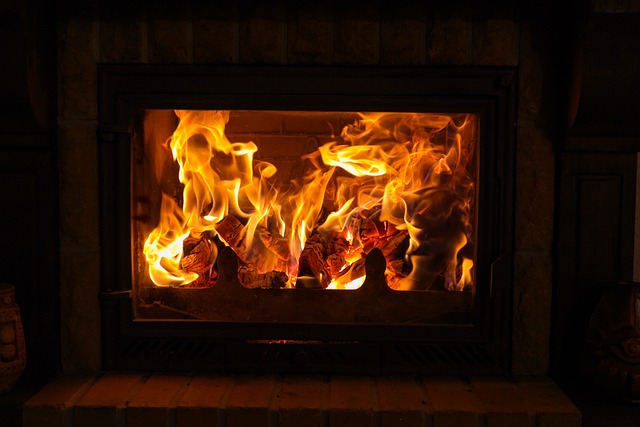Heating a home efficiently is not only essential for comfort but also for minimizing energy consumption and reducing heating costs. With various heating options available, it can be challenging to determine the most efficient and cost-effective way to heat your home. In this comprehensive guide, we will explore a wide range of heating methods and systems, providing insights into their efficiency, cost-effectiveness, and environmental impact. Whether you’re looking to optimize your existing heating system or considering a new installation, this article will help you make an informed decision to keep your home warm and cozy without breaking the bank or harming the environment.
1. Understanding Heating Efficiency
Before delving into specific heating methods, it’s crucial to understand what heating efficiency means and how it is measured. Heating efficiency is typically expressed as a percentage and represents the amount of heat produced compared to the energy input. The higher the efficiency rating, the less energy is wasted, making it a key factor in choosing an efficient heating system.
Efficiency can be influenced by factors such as insulation, climate, and maintenance. A well-insulated home retains heat better, reducing the workload on your heating system. In colder climates, heating systems often need to work harder, affecting overall efficiency. Regular maintenance ensures that your heating system operates at its peak performance.
2. Central Heating Systems
Central heating systems are a popular choice for heating entire homes efficiently. They distribute heat throughout the house via a network of pipes, ducts, or radiators. Here are some of the most common types of central heating systems:
a. Gas Central Heating
Gas central heating systems are widely used due to their efficiency and cost-effectiveness. They rely on a gas boiler to heat water, which is then circulated through radiators or underfloor heating systems. Gas is a relatively inexpensive fuel source, and modern condensing boilers can achieve high levels of efficiency.
Efficiency: Gas central heating systems can be highly efficient, with modern condensing boilers achieving efficiency ratings of over 90%.
Cost-effectiveness: Gas tends to be cost-effective, but the actual cost depends on gas prices in your area.
Environmental Impact: While natural gas is cleaner than some other fossil fuels, it still emits greenhouse gases when burned.
b. Oil Central Heating
Oil central heating systems use an oil-fired boiler to heat water, which is then distributed through radiators or underfloor heating. The oil heating can be an option in areas without access to natural gas.
Efficiency: Oil central heating systems can be efficient, with modern boilers achieving reasonable efficiency levels.
Cost-effectiveness: The cost of heating oil can be subject to fluctuations, impacting overall cost-effectiveness.
Environmental Impact: Oil heating produces emissions, contributing to air pollution and greenhouse gas emissions.
c. Electric Central Heating
Electric central heating systems use electric boilers or heat pumps to provide heating. While electric heating is convenient and can be installed without a chimney or flue, it is often less energy-efficient compared to gas or oil heating.
Efficiency: Electric heating systems vary in efficiency, with heat pumps being more efficient than electric resistance heating.
Cost-effectiveness: Electric heating can be costly, especially in areas with high electricity rates.
Environmental Impact: The environmental impact of electric heating depends on the source of the electricity. If it comes from renewable sources, it can be more environmentally friendly.
3. Ductless Mini-Split Heat Pumps
Ductless mini-split heat pumps, also known as ductless HVAC systems, have gained popularity for their energy efficiency and versatility. These systems consist of an outdoor compressor unit and one or more indoor air-handling units. They can provide both heating and cooling, making them a year-round solution.
Efficiency: Ductless mini-split heat pumps are highly efficient, with some models achieving Seasonal Energy Efficiency Ratios (SEER) of 20 or more for cooling and Heating Seasonal Performance Factors (HSPF) of 10 or more for heating.
Cost-effectiveness: While the initial installation cost can be higher than some other systems, the long-term energy savings often make ductless mini-splits cost-effective.
Environmental Impact: Ductless mini-split heat pumps are environmentally friendly, especially when powered by electricity from renewable sources.
4. Radiant Floor Heating
Radiant floor heating is a luxurious and energy-efficient way to heat your home. It involves installing a network of pipes or electric heating cables beneath the floor to provide even and consistent heating.
Efficiency: Radiant floor heating is highly efficient because it directly warms the objects and people in the room, reducing heat loss.
Cost-effectiveness: While the upfront installation cost can be significant, radiant floor heating can be cost-effective in the long run due to its efficiency and comfort benefits.
Environmental Impact: Radiant floor heating powered by electricity can have a low environmental impact if the electricity comes from renewable sources.
5. Wood-Burning Stoves and Pellet Stoves
Wood-burning stoves and pellet stoves offer a traditional and cozy way to heat your home using renewable biomass fuels. They can be used as supplementary heating sources or as primary heating systems.
a. Wood-Burning Stoves
Wood-burning stoves burn logs or wood pellets to produce heat. They require a chimney or flue for ventilation.
Efficiency: The efficiency of wood-burning stoves can vary, but modern, EPA-certified stoves are designed for higher efficiency and lower emissions.
Cost-effectiveness: The cost-effectiveness of wood-burning stoves depends on the availability and cost of firewood or wood pellets in your area.
Environmental Impact: Wood-burning stoves emit particulate matter and can contribute to air pollution if not used with proper ventilation and clean-burning techniques.
b. Pellet Stoves
Pellet stoves use compressed wood pellets as fuel, which are automatically fed into the combustion chamber. They are known for their convenience and automated operation.
Efficiency: Pellet stoves are generally more efficient than traditional wood-burning stoves, with efficiency ratings often exceeding 80%.
Cost-effectiveness: The cost of wood pellets can vary, but pellet stoves can be cost-effective if pellets are readily available and reasonably priced.
Environmental Impact: Pellet stoves produce lower emissions compared to traditional wood-burning stoves, making them a cleaner option.
6. Heat Pumps
Heat pumps are versatile heating and cooling systems that can extract heat from the air, ground, or water to heat your home. There are three main types of heat pumps:
a. Air-Source Heat Pumps (ASHP)
Air-source heat pumps extract heat from the outdoor air and transfer it into your home. They can be used for both heating and cooling.
Efficiency: The efficiency of ASHPs depends on the temperature difference between the outdoor and indoor air. They work well in moderate climates but may be less efficient in extremely cold conditions.
Cost-effectiveness: ASHPs can be cost-effective in regions with milder winters and where electricity rates are reasonable.
Environmental Impact: ASHPs can be environmentally friendly if powered by clean electricity.
b. Ground-Source Heat Pumps (GSHP or Geothermal Heat Pumps)
Ground-source heat pumps use the stable temperature of the ground to provide heating and cooling. They are highly efficient but can be more expensive to install due to the need for ground loops.
Efficiency: GSHPs are among the most efficient heating and cooling systems available, with high coefficient of performance (COP) ratings.
Cost-effectiveness: While the upfront installation cost can be substantial, GSHPs often provide long-term cost savings due to their efficiency.
Environmental Impact: GSHPs are environmentally friendly and produce low emissions, especially when powered by clean electricity.
c. Water-Source Heat Pumps
Water-source heat pumps use water bodies such as lakes, rivers, or ponds as a heat source or sink for heating and cooling.
Efficiency: Water-source heat pumps can be highly efficient, similar to ground-source heat pumps.
Cost-effectiveness: The cost-effectiveness of water-source heat pumps depends on the availability and accessibility of a suitable water source.
Environmental Impact: Water-source heat pumps can be environmentally friendly if water bodies are not negatively impacted.
7. Solar Heating Systems
Solar heating systems use energy from the sun to provide space heating or hot water. There are two main types of solar heating systems:
a. Solar Thermal Systems
Solar thermal systems use solar collectors to absorb sunlight and heat a fluid, which is then circulated to provide space heating or domestic hot water.
Efficiency: Solar thermal systems can be highly efficient, especially in sunny climates.
Cost-effectiveness: The cost-effectiveness of solar thermal systems depends on the local solar conditions and incentives or rebates available.
Environmental Impact: Solar thermal systems have a low environmental impact as they use renewable solar energy.
b. Solar Photovoltaic (PV) Systems with Electric Heat Pumps
Solar PV systems generate electricity from sunlight, which can then be used to power electric heat pumps for space heating.
Efficiency: The efficiency of this system depends on the performance of the PV panels and the electric heat pump.
Cost-effectiveness: Solar PV systems with heat pumps can be cost-effective if the upfront cost of installation is offset by energy savings and incentives.
Environmental Impact: Solar PV systems are environmentally friendly as they generate clean electricity.
8. Efficient Use of Central Heating Systems
If you have a central heating system, there are several strategies you can implement to maximize its efficiency:
a. Proper Insulation
Ensure your home is well-insulated to prevent heat loss. Insulate walls, ceilings, and floors, and seal any gaps or leaks in windows and doors.
b. Programmable Thermostat
Install a programmable thermostat to set heating schedules that align with your daily routines. Lower the temperature when you’re not at home or while you’re asleep to save energy.
c. Regular Maintenance
Schedule annual maintenance for your heating system to keep it running efficiently. This includes cleaning, tuning, and inspecting components.
d. Zoning
Consider zoning your heating system to heat specific areas of your home based on usage patterns. This prevents heating empty rooms.
e. Radiator Reflectors
Place reflective panels behind radiators to direct heat into the room rather than into the wall.
f. Upgrade to High-Efficiency Boilers or Furnaces
If your central heating system is outdated, consider upgrading to a high-efficiency boiler or furnace. Look for models with the ENERGY STAR label.
9. Cost-Effective Heaters for Specific Needs
In addition to central heating systems, there are cost-effective heaters designed for specific needs:
a. Space Heaters
Space heaters are portable and provide focused heating to specific areas. Choose energy-efficient models with safety features.
b. Electric Baseboard Heaters
Electric baseboard heaters are often used as supplementary heating sources. They are simple to install and provide zoned heating.
c. Portable Radiant Heaters
Portable radiant heaters use infrared technology to provide instant and efficient heating. They are suitable for spot heating.
d. Heat Recovery Ventilators (HRVs)
HRVs not only improve indoor air quality but also recover heat from outgoing air to preheat incoming fresh air.
10. Combining Heating Systems
In some cases, combining multiple heating systems can provide an efficient and flexible solution. For example, you can use a combination of a central heating system and a wood-burning stove for supplemental heating during extremely cold weather. This approach allows you to maximize efficiency while maintaining comfort.
Conclusion
Choosing the most efficient and cost-effective way to heat your home involves considering various factors, including your location, climate, budget, and environmental concerns. Each heating method and system has its advantages and disadvantages, and the best choice for your home may differ from others.
To make an informed decision, it’s essential to assess your specific needs and priorities. Consider factors such as efficiency, cost-effectiveness, environmental impact, and the availability of energy sources in your area. By carefully evaluating your options and implementing energy-saving strategies, you can keep your home warm and comfortable while minimizing energy consumption and reducing heating costs. Ultimately, the most efficient way to heat your home is the one that aligns with your unique circumstances and preferences.










